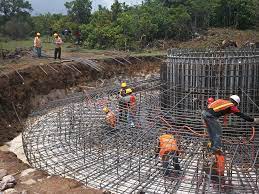 Choosing the best foundation for your construction project is a critical decision that will have a profound impact on the final design and function of your structure. There are several factors to consider, including the topography of the site, the amount of space available, the type of construction, and the soil type. Visit this website https://bronteconstruction.ca/blog/foundations-is-the-next-construction-frontier/
Choosing the best foundation for your construction project is a critical decision that will have a profound impact on the final design and function of your structure. There are several factors to consider, including the topography of the site, the amount of space available, the type of construction, and the soil type. Visit this website https://bronteconstruction.ca/blog/foundations-is-the-next-construction-frontier/
A foundation is a structural supporting member that transfers loads from the top to the bottom. It provides a level surface and prevents cracks and other damages from occurring. A foundation is also a major factor in maintaining structure stability in case of a natural calamity.
Choosing the best foundation for your construction project involves several key factors, including the topography of the site, amount of space available, the type of construction, the soil type, and the size of the structure. It is important to select a foundation that will safely transfer the total load from the structure to the soil. There are two basic types of foundations. Shallow foundations are most common, while deep foundations are more complex.
Shallow foundations are typically used in buildings located in low-lying areas. These foundations are designed to support the structure up to 1.5 meters deep. They are usually constructed of concrete or reinforced concrete. This type of foundation is a good choice if your building is expected to withstand light structural loads. It is important to note that the depth of the foundation does not correlate with the amount of load it can support. The depth of the foundation should be increased only when it is necessary to.
Deep foundations are typically used under large buildings. These foundations transfer loads to the deeper layers of the soil. Deep foundations are often used in conjunction with other supporting materials such as pillars and beams. Deep foundations offer long-term support for linear structures. Deep foundations may be formed in various ways, such as cast-in-situ bored piles, driven piles, or diaphragm walls.
The foundation may be a simple rectangular concrete pad or a complex construction consisting of many smaller units. The most common type of foundation is the individual footing. These units are usually square concrete pads that are designed to support a column or a building load. Each footing is attached to a column with a horizontal plinth beam.
The pile is a slender member that spreads loads through bearing and skin friction. This is the foundation’s main function. The pile is pushed into the ground using specialist equipment. It is filled with concrete and reinforced steel to provide a firm footing.
The foundation is not the only component of a structure, as the sub-structure also distributes loads uniformly throughout the structure. This is to prevent differential settlement, which could result in tilting or bending of the structure. The foundation is also a critical component for national and local construction projects. It is a great way to ensure stability and durability for your building.
The construction process is often challenging. There is a high cost to installing deep foundations, as well as a great deal of care and monitoring.
